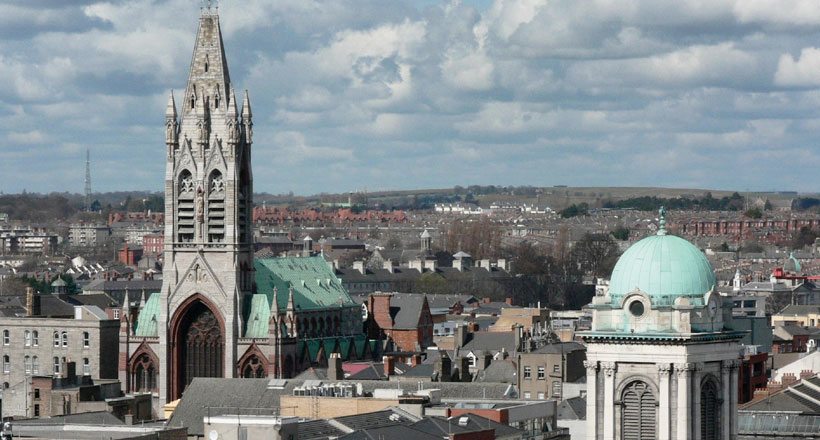Peter Pearson writes in praise of the vertical, as seen in Dublin’s variety of pinnacles, spires and towers

Peter Pearson writes in praise of the vertical, as seen in Dublin’s variety of pinnacles, spires and towers
One morning in March 1966 Dubliners woke up to the news that Nelson’s Pillar had been blown up and I remember as a young boy being shocked that such a solid monument of cut stone and such a seemingly permanent city landmark could be destroyed in this way. I made a model with Pollyfilla and bits of granite of the truncated stump, to display at school as a statement of protest at this Taliban-like, ethnic cleansing of history and identity. Not that anyone cared about Nelson or what he stood for, but The Pillar had become a much-loved Dublin symbol, a meeting place and perhaps more importantly, a tall viewing point from which to survey the capital. I was lucky enough to have been brought to climb the steps of The Pillar just three weeks before its destruction.
To read this article in full, subscribe or buy this edition of the Irish Arts Review
One morning in March 1966 Dubliners woke up to the news that Nelson’s Pillar had been blown up and I remember as a young boy being shocked that such a solid monument of cut stone and such a seemingly permanent city landmark could be destroyed in this way. I made a model with Pollyfilla and bits of granite of the truncated stump, to display at school as a statement of protest at this Taliban-like, ethnic cleansing of history and identity. Not that anyone cared about Nelson or what he stood for, but The Pillar had become a much-loved Dublin symbol, a meeting place and perhaps more importantly, a tall viewing point from which to survey the capital. I was lucky enough to have been brought to climb the steps of The Pillar just three weeks before its destruction.



Christian Dupont compares two embroideries illustrating an enigmatic poem by WB Yeats from the collection of Burns Library at Boston College
